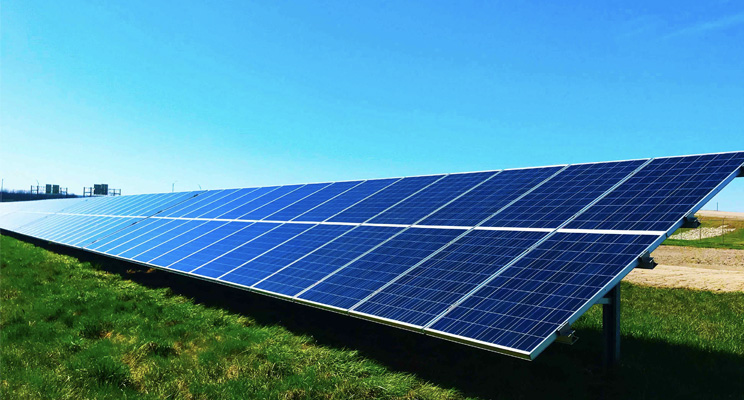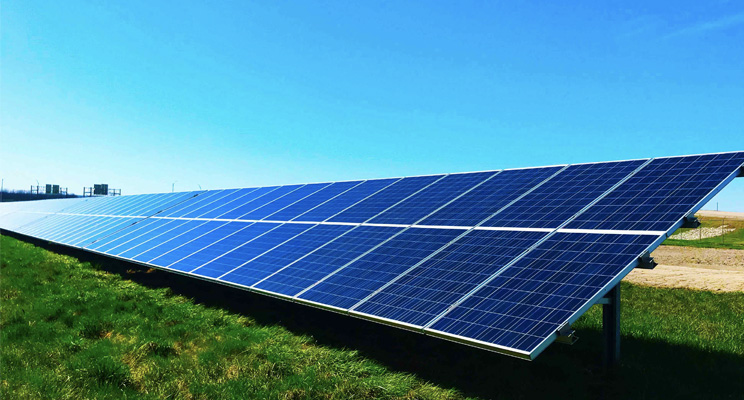英語記事|President Biden’s infrastructure bill explained: How green technology will be implemented in the US

Due to climate change and the undeniable warming of the Earth, environmentally friendly technology has become increasingly important. The time for change is imminent, and with Biden’s Build Better Back agenda, the United States will become one step closer to achieving a sustainable future.
What is Joe Biden’s infrastructure bill?
Recently, US President Joe Biden released his Build Back Better agenda to become a nation that uses carbon-free power generation by 2035 and to have net-zero emissions by 2050. With this new plan, $3 trillion will be spent in the effort to boost the economy and rebuild outdated infrastructure, such as highways, bridges, rail lines.
Additionally, the money will be used to invest in technology that will target the factors involved in climate change, such as greenhouse gas emissions. Moreover, the action to target global warming and climate is expected to create millions of jobs in the construction, skilled trade, and engineering industries. Further, Biden’s plan will encourage workers to join organized unions to ensure safe working environments and fair pay that will further build up the middle class.
The key elements that are listed in Biden’s Build Better Back plan include:
Build a modern, sustainable infrastructure.
Invest in the auto industry to invent 21st-century technology.
Carbon-free power by 2035
Build 1.5 million affordable homes.
Build energy-efficient buildings.
Invest in clean energy innovation.
Create equitable economic opportunity and environmental justice.
This plan will make sure that every community will have clean water, clean air, reliable yet sustainable public transit, connection to high-speed internet, and access to jobs and education.
How will infrastructure change to incorporate green technology?
Numerous industries will receive the funds to work towards a clean energy economy. Not only does this bill propose a more sustainable infrastructure, but it will deliver an equitable and clean future for the energy industry.
Biden’s plan to improve infrastructure includes many moving parts. But mainly, the Build Better Back plan will focus on rebuilding infrastructure to be more resistant to floods, fire, and other natural threats as well as supporting healthy and safe communities. The Biden administration wants to remove air pollutants and promote safe drinking water that uses new, innovative green technology to lead the way.
Transit and the auto industry
To reduce air pollution and make the auto industry greener, Biden has proposed the transformation to sustainable energy sources, such as electricity and clean fuel. With this agenda, it will become easier to use electricity to power all forms of transportation, including, but not limited to, commuter trains, school and transit buses, ferries, and passenger vehicles.
Many Americans do not have the means to access vehicles that are higher-quality and have zero emissions, so Biden wants to improve public transit. Additionally, this proposal will provide better options for efficient public transportation by 2030. Not only will this be a viable option for transportation for many communities, but it will cut down on air pollution.
Rebuild crumbling infrastructure
To rebuild modern infrastructure, this plan will focus on the transformation of roads, bridges, railways, aviation, ports, and inland waterways. By incorporating greener practices, clean electric systems, and cleaner fuels, American infrastructure will be revolutionized.
By building and rebuilding over 4 million energy-efficient homes, more families will have access to clean energy and reduced electric bills. Additionally, these homes will be weatherized and protected from natural disasters, including the use of better air filtration systems to improve air quality should another pandemic strike occur.
Improve the railroad industry
Biden wants to enact the cleanest, fastest, safest, and the most efficient railroad system in the world. Used for both passengers and freight, this rail revolution will work to electrify the rail systems and reduce fuel emissions.
Water quality monitoring technology
From rural to urban areas, this plan will ensure that everyone has access to clean drinking water. By investing in the repair of current water lines and sewer systems, the replacement of lead pipes, the improvement of water treatment plants, and the use of efficient water quality monitoring technology, every person will have a source of clean, sustainable water.
Build communities on underused lands
By utilizing Brownfield properties, Biden’s proposal will build communities on this abandoned and unused land. The sites of old power plants and industrial facilities, landfills, abandoned mines, and the sites of other lands will be repurposed for new economic hubs and communities.
Utilize energy efficiency
By incorporating more efficient usage of electricity in public transit, current buildings, and industrial centers. This plan will reform and extend the current tax incentives that work to promote energy efficiency and maximize technology-neutral Energy Efficiency and Clean Electricity Standard (EECES). To do this, Biden will make use of current infrastructure and assets, such as using current electric lines and revolutionizing existing power plants.
Further, research for energy-efficient technology will be given greater incentive and funds to proceed with finetuning energy-efficient practices.
IMAGE SOURCE: CHELSEA ON UNSPLASH



